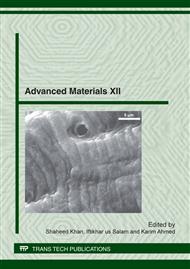p.233
p.241
p.248
p.255
p.261
p.265
p.271
p.277
p.284
Laser Induced Backside Dry Etching of BK-7 and Quartz in Vacuum
Abstract:
Laser Induced Plasma Assisted Ablation (LIPAA) has been used to carry out back side dry etching/ablation of different optical glasses under vacuum. It is observed that etching depth increases with decrease in target-substrate gap and becomes maximum (50 μm) at zero gap size for steel-quartz pair. The maximum ablation depth for brass-quartz pair was 25 μm. The effects of laser power on etching depth and laser scan speed has also been reported.
Info:
Periodical:
Pages:
261-264
Citation:
Online since:
May 2012
Authors:
Keywords:
Price:
Сopyright:
© 2012 Trans Tech Publications Ltd. All Rights Reserved
Share:
Citation:


